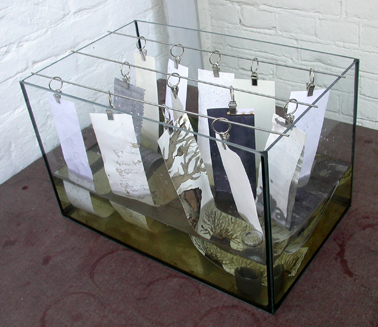
[...] De praktijk van het microbiologische kunstklimatologiseren vangt aan bij het te water laten (het submergeren) van (een fragment van) de kunstwerken in een omgeving met veel micro-organismen (slootwater). Micro-organismen zullen zich in groten getale in en op het kunstwerk nestelen en hiermee de sleutel vormen voor de microbiologische kunstklimatologische analyse. Het type organisme dat op het werk afkomt zal uiteindelijk de kwaliteit van het kunstwerk bepalen.[...] Het determineren is het meest wezenlijke onderdeel van de microbiologische kunstklimatologie. Het dient met grote zorgvuldigheid te geschieden. Als je bij wijze van spreken nog geen Ciliaat van een Gastrotrich kan onderscheiden zal het onmogelijk blijken een goede 'hard edge' en een wat mindere 'colourfield painting' uit elkaar te houden. Met een foutieve determinatie kan grote schade aangericht worden binnen museumcollecties en privéverzamelingen. Uiteindelijk kunnen de gevolgen voor het verloop van de kunstgeschiedenis niet te overzien zijn. De determinerende kunstklimatoloog dient zich terdege van zijn zware verantwoordelijkheden bewust te zijn. [...]
[...] The practice of microbial art climatology starts with immersing (a sample of) the art works (submergence) in an environment with a lot of micro-organisms (ditchwater). Micro-organisms will settle in and on the art works in great numbers and by doing so provide the key to the microbial art climatological analysis. In the end, the quality of the art work is determined by the type of organism that it attracts [...] Determination is the most essential part of the microbial art climatology. It needs to be carried out with the utmost precision. If you cannot distinguish a Ciliate from a Gastrotrich you will certainly not be able to tell a good 'hard edge' from a mediocre 'colourfield painting'. An incorrect determination can cause a lot of damage to both museum and- private collections. Eventually, it might disrupt our overall view of the course of art history. The art climatologist should assume full responsibility for his determination. [...]